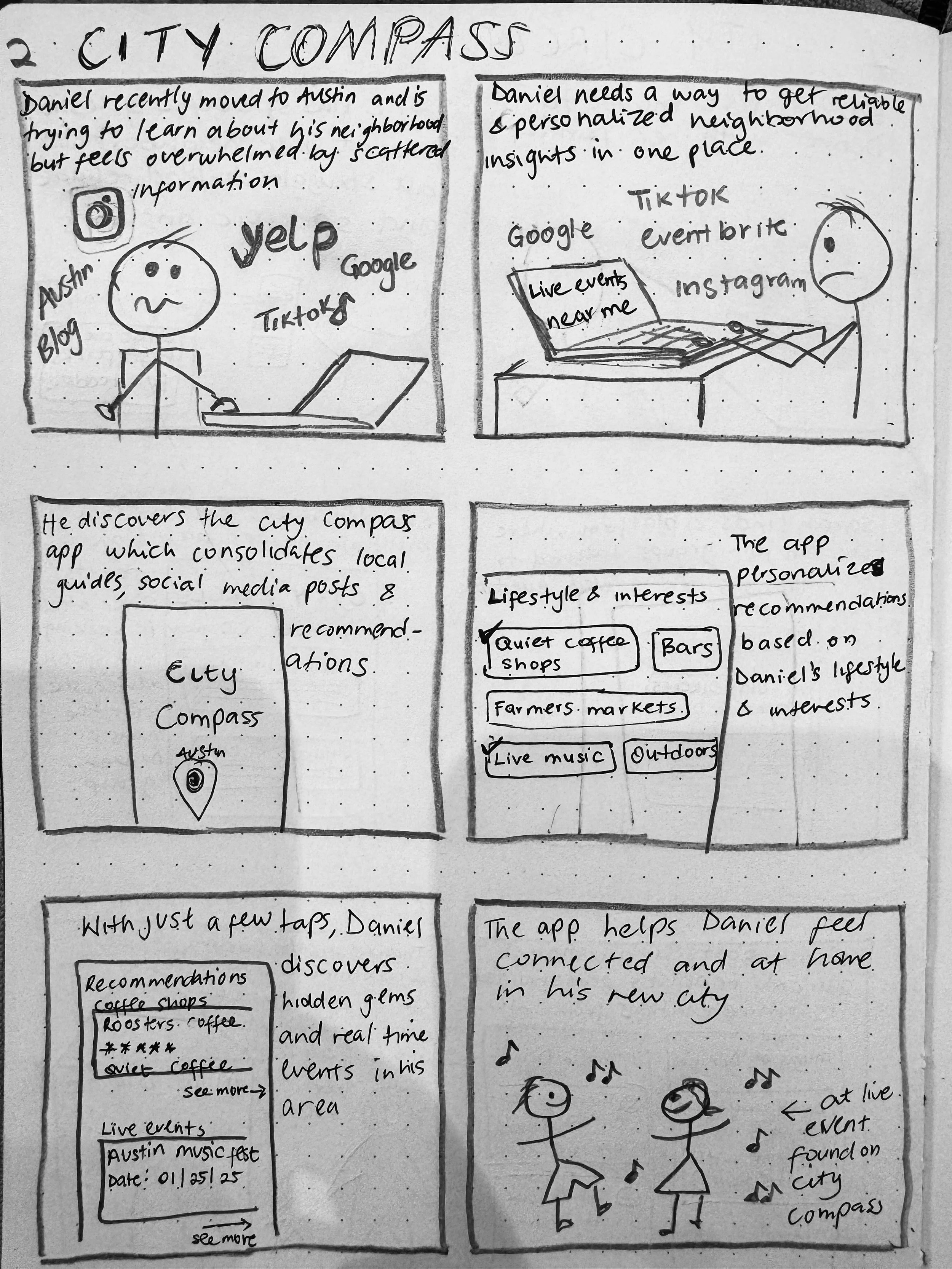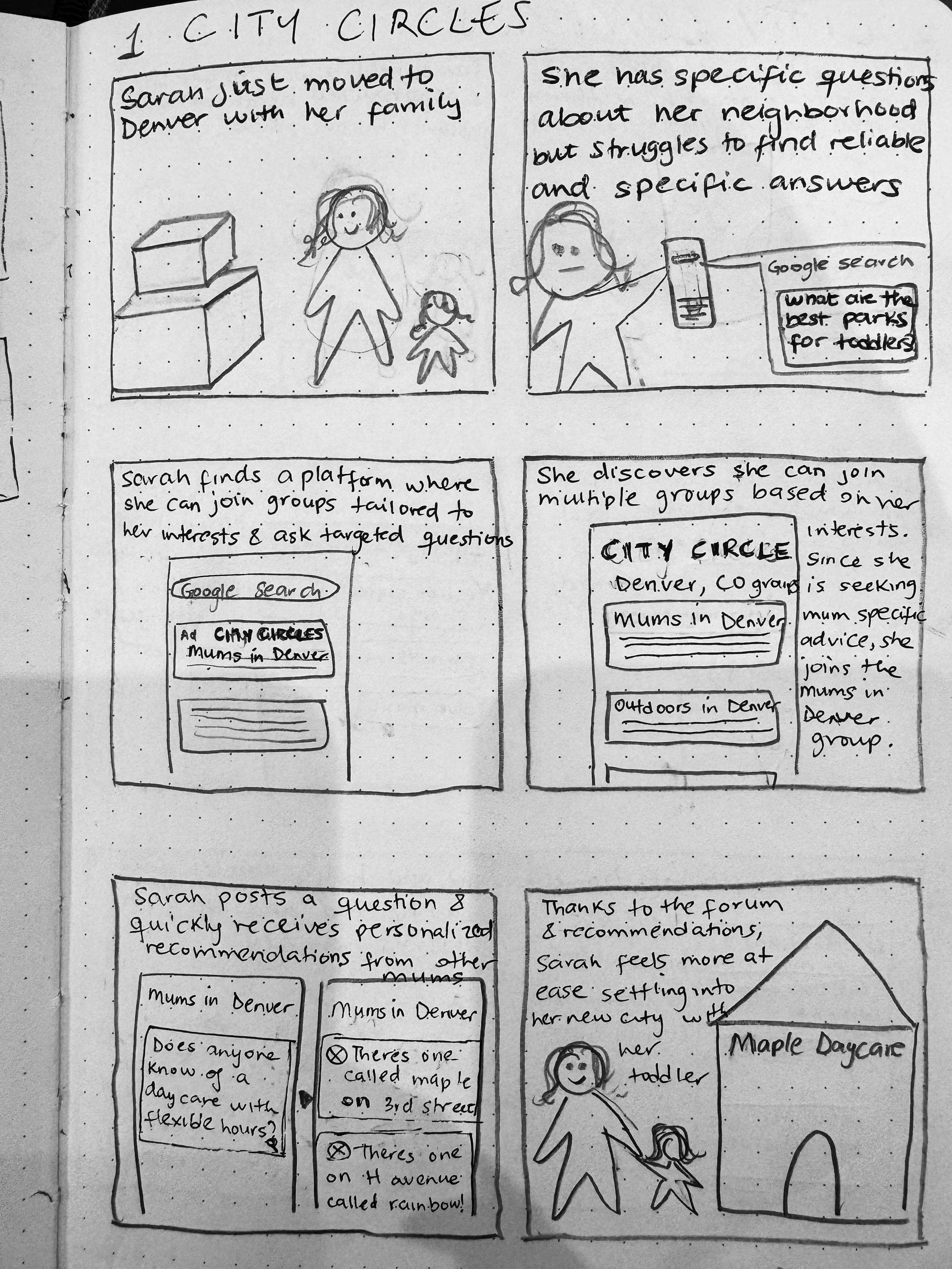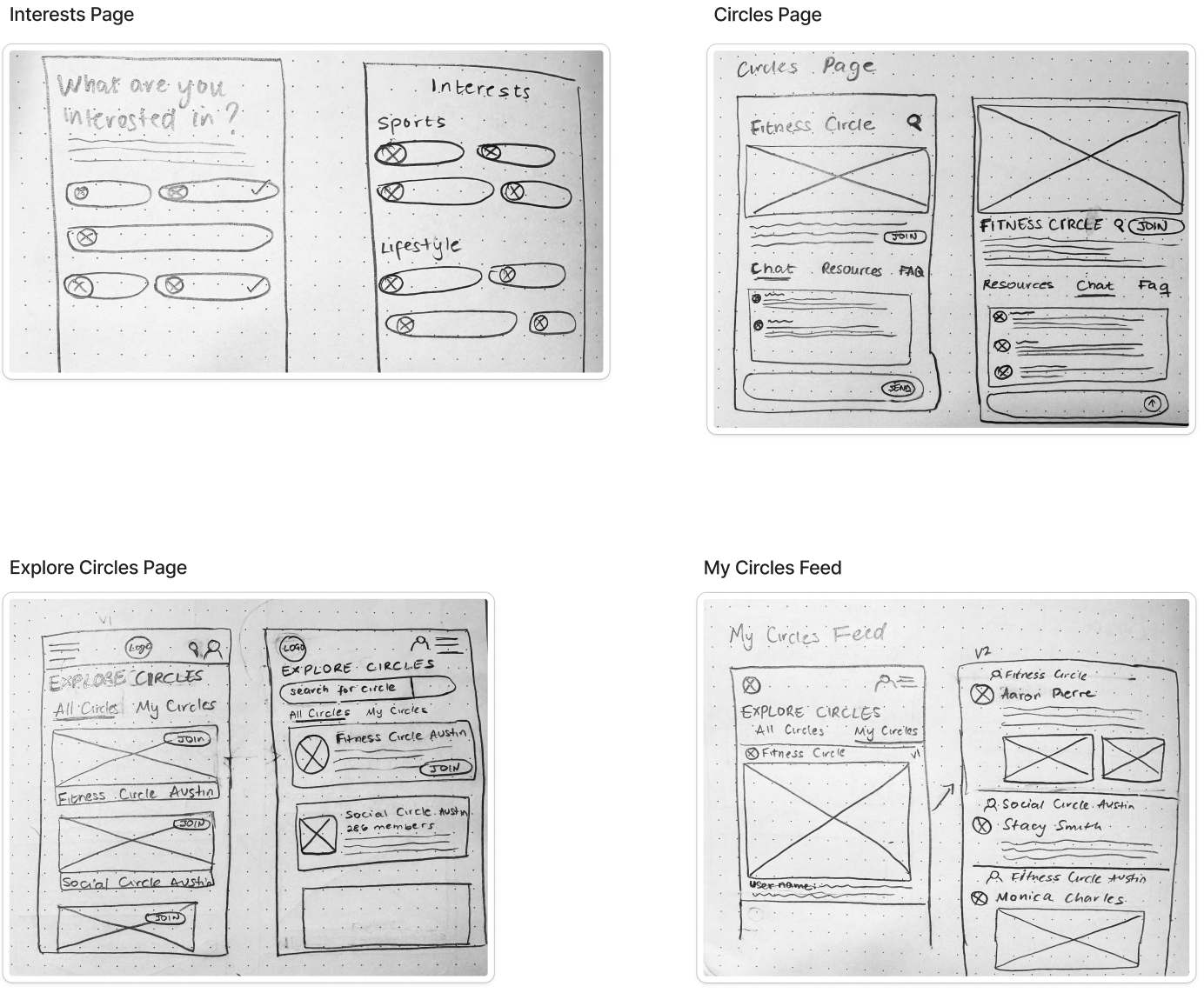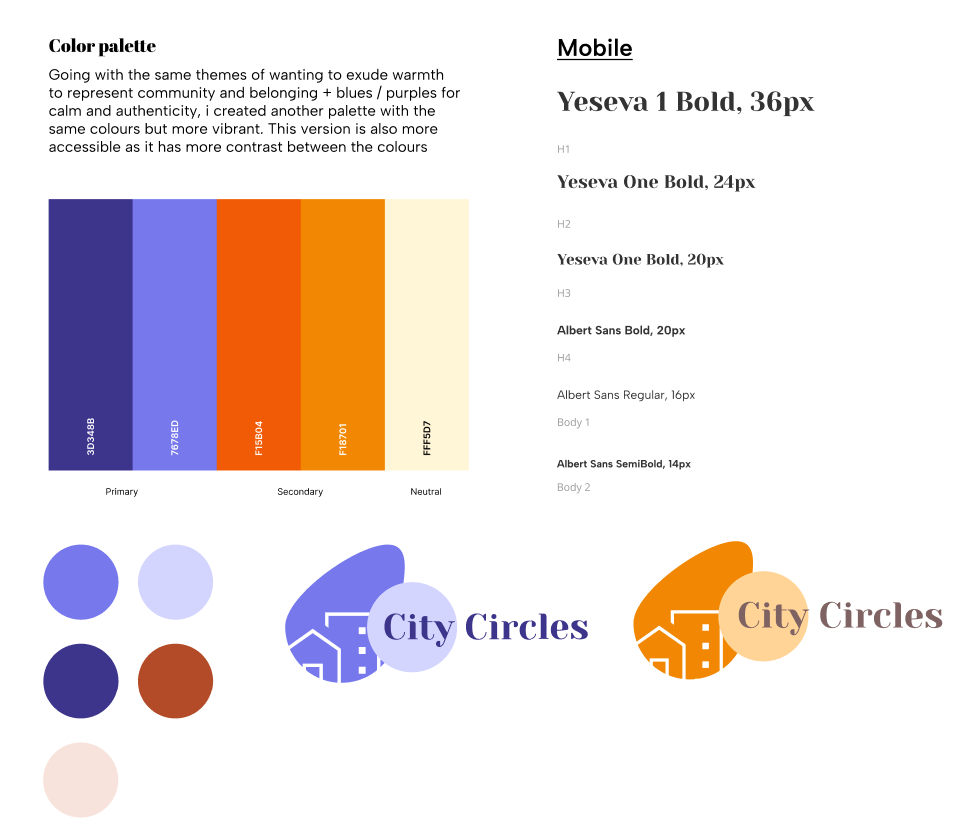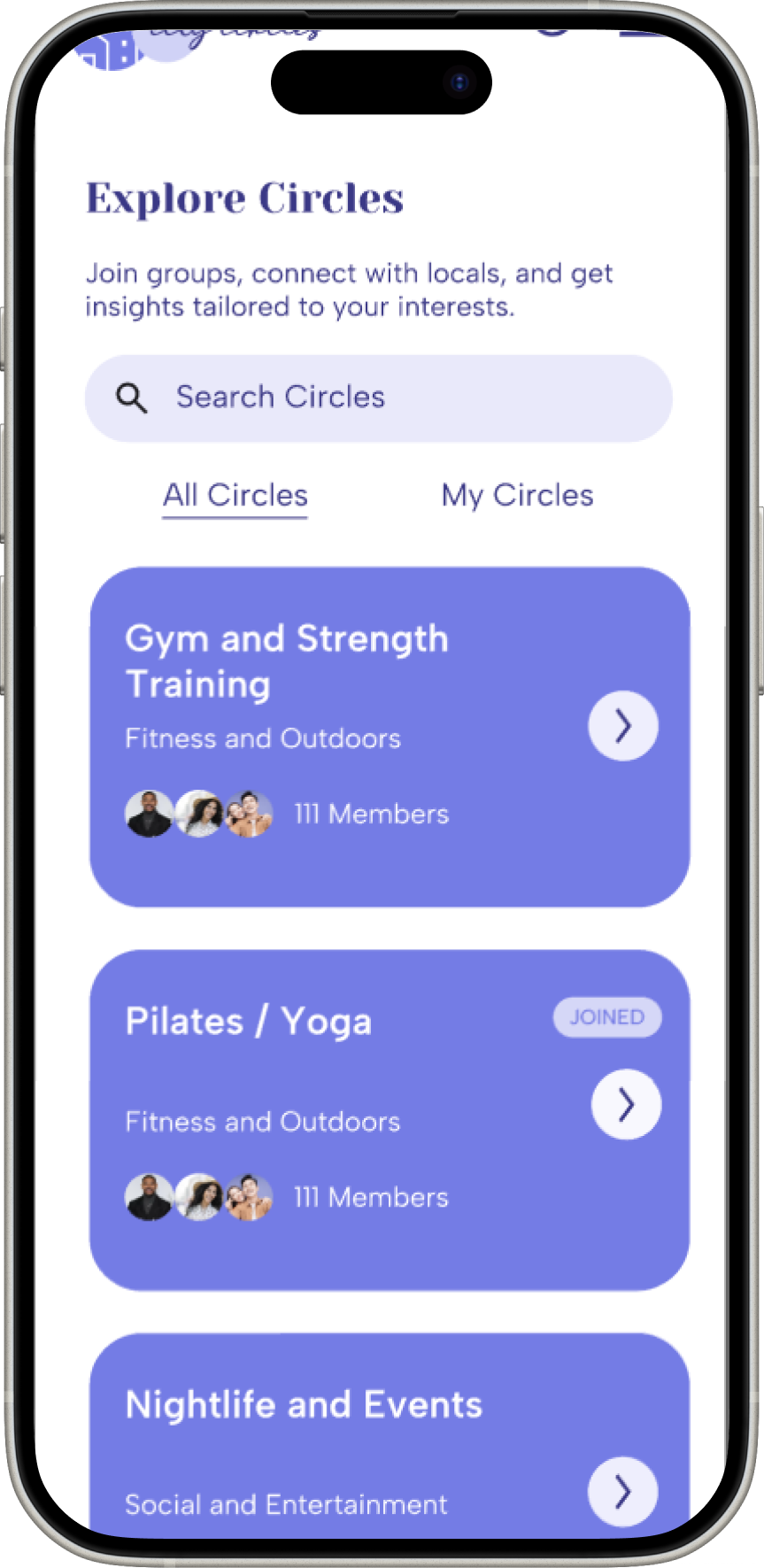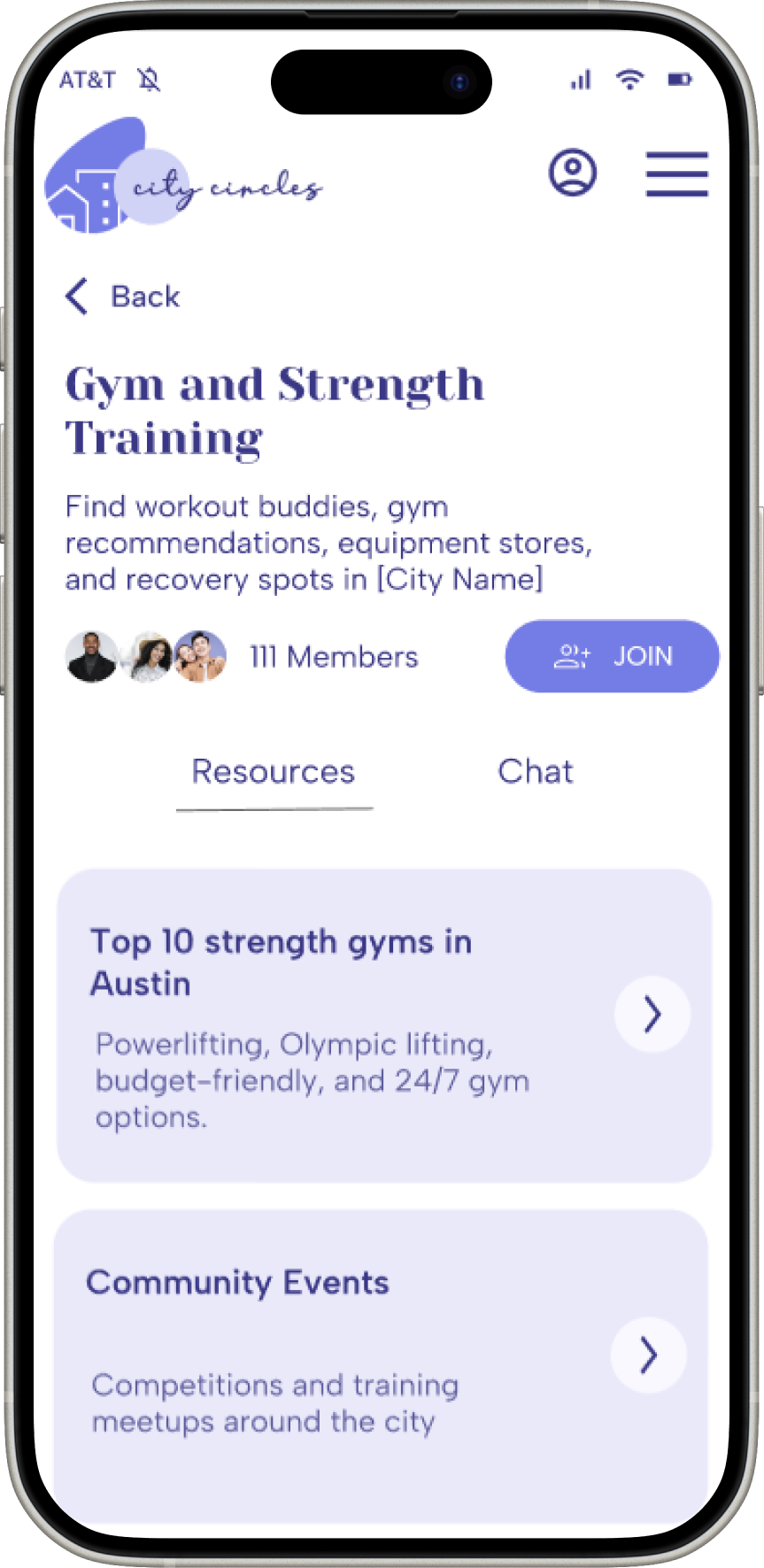City Circles - End to End Product Design
Overview: City Circles is a mobile solution that helps newcomers settle into a new city faster by connecting them with local groups based on demographics and interests.
Role: Sole UI/UX Designer, Researcher, Brand Designer
Tools: Figma, FigJam
Duration: 3 months
Moving to a new city is exciting, but it doesn’t always feel like home right away
Relocating often starts with excitement, but settling can feel overwhelming. Newcomers juggle the logistics of housing and work while also trying to build a life: making friends, finding favorite spots, and connecting with culture. What should feel like discovery often turns into piecing together scattered resources and struggling to feel rooted.
So I spoke with newcomers to understand what makes settling easier.
I interviewed recent transplants to learn how they approached feeling at home. I mapped their journeys and frustrations, and a few clear patterns emerged:
Belonging is social
Without a sense of belonging, users often feel detached from their new environment.
Authenticity Matters
Personal recommendations felt more trustworthy than curated guides or ads.
Scattered Information
People bounced between Reddit, Instagram, Google Maps, and word-of-mouth, with no single place to ground themselves.
One participant summed it up:
“I could find places to go online, but what I really wanted was a way to meet people like me who already knew the city.”
I found newcomers struggle with connection, trust, and scattered resources.
These insights revealed the real challenge: people want connection and cultural understanding, but the tools available make it difficult to find either. I defined the design problem as:
How might we help newcomers quickly understand and integrate into the cultural and social fabric of their new city?
Persona
To ground the problem, I created a persona: The Social Seeker
Meet Sheila - she just moved to a new city and loves exploring and building relationships, but feels overwhelmed by fragmented resources and longs for more authentic ways to feel at home.
Brainstorming
Once I had the key problem and persona identified, I moved on to brainstorming potential solutions and features.
To guide this process, I used creative constraints and the “playing with opposites” technique. These methods helped me push beyond obvious answers and explore different perspectives.
Storyboards
To bring these ideas to life, I created storyboards. Two main directions emerged:
City Compass: a consolidated neighborhood guide app focused on centralizing information.
City Circles: a virtual community where newcomers join groups based on interests or demographics to meet people like them.
I used storyboarding to test different approaches, and City Circles proved to be the strongest way to foster belonging.
So I began shaping City Circles into a product.
With City Circles chosen as the solution, I shifted focus to shaping the experience. I mapped out the newcomer journey from arrival → discovery → connection → belonging, and translated that into task flows that defined how someone would move through the app.
The design centered on three principles:
Interest-based circles that give newcomers an immediate sense of community.
Personalized onboarding that captures interests early to deliver relevant groups and conversations.
Spaces for conversation where local advice feels authentic and human.
Low Fidelity Wireframes
I used low-fidelity wireframes to explore different layouts and navigation patterns, iterating on how people could smoothly move from sign-up to their first circle. To keep the experience cohesive, I created a sitemap that outlined the app’s structure and ensured new features could scale without overcomplicating navigation.
This process helped me refine City Circles into a platform designed not just to deliver information, but to spark belonging from day one.
Sitemap
A sitemap kept the structure clear and ensured the app could grow without overwhelming users.
This process shaped City Circles into a platform focused on helping newcomers feel connected and supported from their very first steps in a new city.
Branding and Visual Identity
Alongside flows and wireframes, I also explored branding directions to make the experience feel modern and community-driven. I used a bold purple palette paired with clean typography to give City Circles a distinct but approachable identity. The visual system was designed to stand out from traditional guide apps and reinforce the idea of City Circles as a fresh, social space for newcomers.
High Fidelity Wireframes
Once the structure and brand identity were in place, I translated the design into high-fidelity screens and tested them with newcomers. This phase was about validating whether the experience worked as intended and refining details based on feedback.
What testing revealed: people wanted more specific tags instead of just broad categories.
How it evolved: I expanded the list of interests to allow for a more personalized experience and better recommendations.
Onboarding /Interest Page During Sign-Up
Designed to capture user interests and tailor group recommendations.
Explore Circles
All Circles
Displays the list of all circles the user can join in their city
My Circles
A filtered version of All circles, displaying a list circles a user is a part of
When a user clicks on a circle, it navigates them to the home page where they can view resources within that page as well as a chat thread where they can ask specific questions + engage by replying to other people’s questions.
Circle Homepages
Resources tab
The Resources tab offers articles, events, curated lists, FAQs, and other helpful content users can access without needing to ask in the chat.
What testing revealed: users consistently prioritized resources over chat, especially those hesitant to post in large groups.
How it evolved: I elevated resources as the primary entry point in each circle, with chat still available for deeper engagemen
Chat tab
The Chat tab is a space for users to ask specific questions and join conversations by replying to others in the thread.
What this project taught me about designing for belonging
City Circles showed me that helping newcomers feel at home goes beyond providing information. The real value comes from creating ways for people to connect with each other and with the culture of their new city.
Through research, brainstorming, and iterative testing, I learned the importance of keeping belonging at the center of design decisions. From the first sketches to high-fidelity prototypes, every choice was guided by one question: will this help someone feel more at home in a new city?
If I were to continue the project, my next steps would be to:
Test long-term engagement and retention.
Expand circles into event discovery and in-person meetups.
Explore partnerships with local organizations to strengthen trust and reach.
Ultimately, City Circles taught me that design can move beyond solving practical problems to shaping experiences that make people feel connected, supported, and at home.




